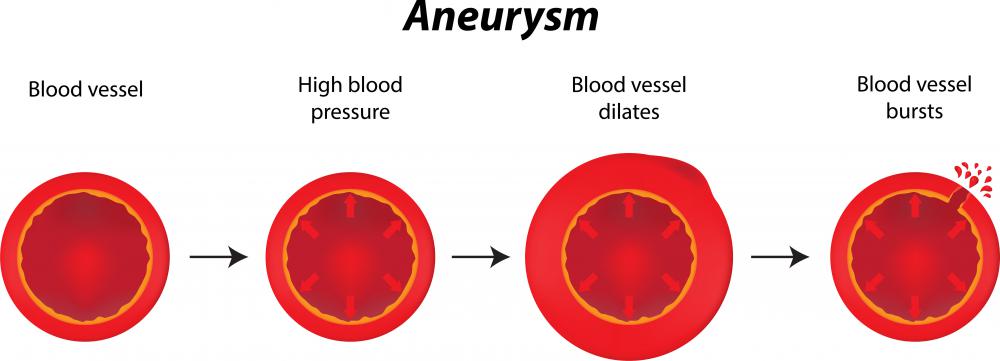At WiseGEEK, we're committed to delivering accurate, trustworthy information. Our expert-authored content is rigorously fact-checked and sourced from credible authorities. Discover how we uphold the highest standards in providing you with reliable knowledge.
What is a Bronchial Artery?
The bronchial artery is the primary blood vessel responsible for supplying the lungs with oxygenated, clean blood. There are two of these arteries, one supplying the left lung, and the other supplying the right. The artery generally originates at the thoracic aorta, which is the primary blood vessel of the heart.
Specifically, the artery supplies blood to the connective tissues of the lungs as well as to the bronchi. The bronchi are the air passageways located in the respiratory tract. They are responsible for carrying air into the lungs. The bronchi then branch into tiny areas of the lungs known as bronchioles. The bronchioles end in small sacs called alveoli.

Each bronchial artery has a branch extending from it that works to supply blood to the esophagus as well as to the lungs. While some of this blood is returned via the bronchial veins, a significant amount of the blood is actually returned by the pulmonary veins. The bronchial arteries are sometimes confused with the pulmonary arteries. This is understandable since they both supply blood to the lungs. However, there are some important differences to consider.

The pulmonary arteries are considerably larger than the bronchial arteries and are responsible for pulmonary circulation. That is to say that they provide blood to the lungs only. The bronchial arteries, on the other hand, provide systemic, or system-wide, circulation.
Perhaps the most significant differences between the bronchial and pulmonary arteries lie in origin of blood circulation. For instance, the bronchial arteries are responsible for carrying clean, or oxygenated, blood. This blood is pumped from the left ventricle of the heart. Conversely, the pulmonary arteries pump deoxygenated blood from the right ventricle of the heart.

A common ailment that may affect this artery is known as chronic pulmonary thromboembolic hypertension. This condition causes blood clots, and as a result, the blood pressure can be significantly elevated. This condition is common in patients with cancer or those who are confined to bed for prolonged periods of time. Immediate medical attention is essential, as death can occur from this medical emergency.

Aneurysms have also been known to develop in this artery. An aneurysm is basically a swollen blood vessel. If the vessel ruptures, death can occur. Bronchial aneurysms are often mistaken for aortic aneurysms which originate in the aorta. However, the symptoms can be so similar that misdiagnosis is possible without proper precautions and testing being performed.
AS FEATURED ON:
AS FEATURED ON:















Discussion Comments
@Animalz – There’s no need to worry. As a med student, I’ve sat in on a dozen bronchial artery embolization (BAE) treatments. It’s a nonsurgical treatment for a condition called hemoptysis, and it’s often very effective. Your grandmother should see an improvement in her condition after one treatment, with increased improvements after additional treatments.
The embolization procedure consists of a muscular injection and complete sedation through the use of intravenous drugs. Since this will be her first BAE procedure, the bronchial artery in question will be catheterized. Other arteries may also be catheterized, if they are also giving her problems.
Next, an embolization fluid made of polyvinyl alcohol particles will be pumped through the catheters. The fluid will block off the damaged parts of her arteries, which should reduce the amount of blood leaking into her lungs. If embolization needs to be done to large blood vessels, steel or platinum coils may be used instead of fluid.
The entire procedure is very closely monitored from start to finish. It may sound scary, but your grandmother will be sedated for the entire process, and won’t feel a thing. This procedure is very successful in treating medical conditions, so there’s no need to worry.
What’s a bronchial artery embolization? My grandmother’s going to get one next week, and I want to know if it’s a dangerous procedure or not.
Post your comments